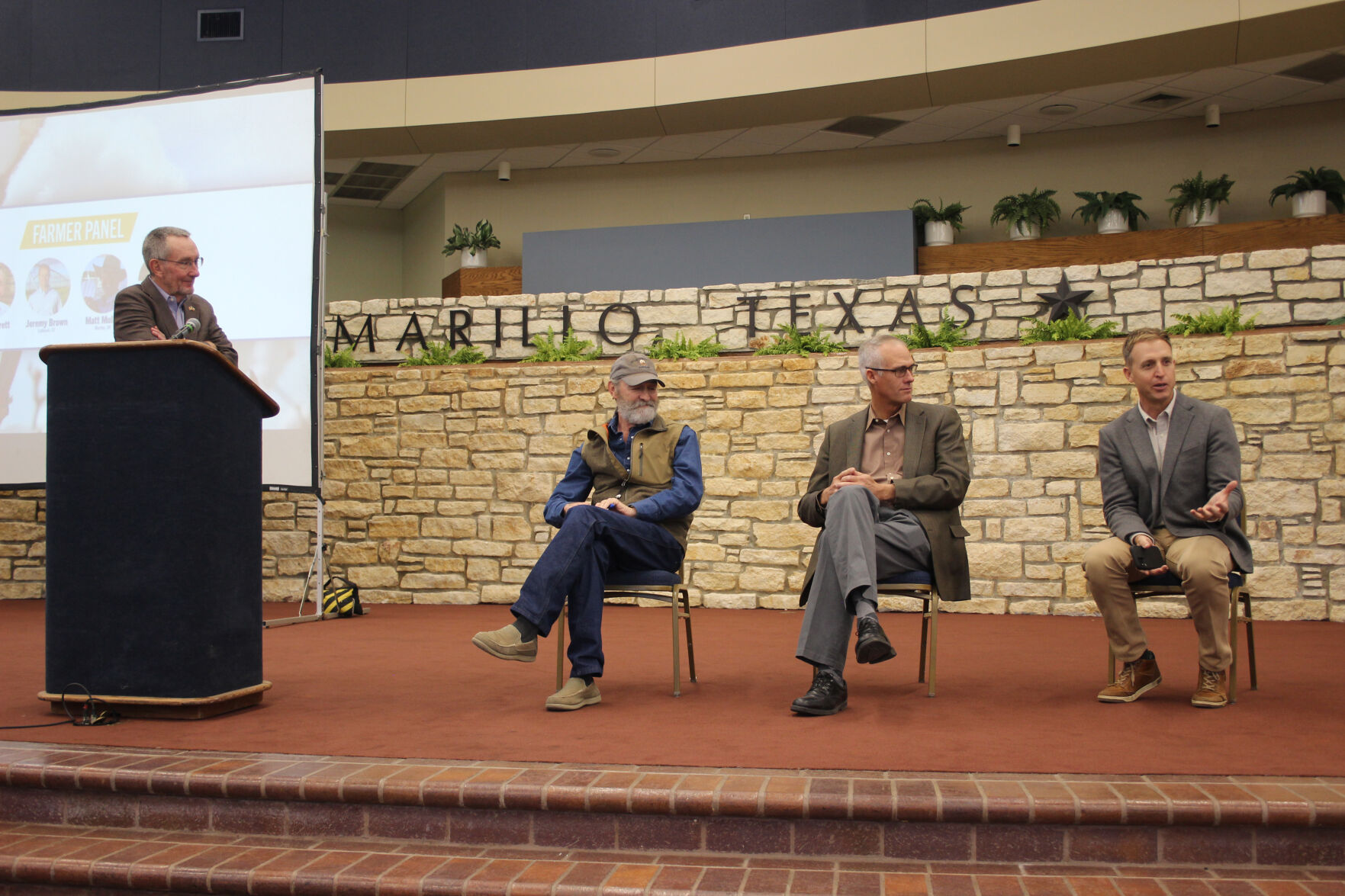Cotton U farmer panel discussion centers on drought, inputs, cover crops and sustainability

High Plains Journal’s Cotton U, which was also sponsored by IDEAg, was held Dec. 2 in conjunction with the Amarillo Farm & Ranch Show in Amarillo, Texas. The half-day event consisted of two speakers and a farmer panel, with continuing education units available to attendees. The farmer panel, which is a well-liked element of all HPJ educational events, included three cotton growers from Texas and Oklahoma while Steve Verett, a familiar face to cotton growers in the Texas High Plains, served as moderator.
Verett previously served as the CEO of Plains Cotton Growers, Inc for 24 years and is currently an advisor to the current CEO of PCG. PCG is the certified cotton producer organization representing cotton producers in the 42 counties of the Texas High Plains. He continues to be actively involved with his son Kristofer on a 4,000-acre farming operation in Crosby County, Texas, growing cotton, corn, sorghum and cover crops.
The farmer panelists included Tom Buchanan, Matt Muller and Jeremy Brown. Buchanan is from Altus, Oklahoma, and grows irrigated and dryland cotton in addition to managing a beef operation. He is president of Oklahoma Farm Bureau and serves as the general manager of the Lugert-Altus Irrigation District and represents irrigation water use interests as vice chairman of the Oklahoma Water Resources Board.
Muller is a fourth generation share cropper from Martha, Oklahoma. He rented his first farm in 1985 at age 14 and harvested his first cotton crop in 1986. Matt and his wife, Kellie, primarily raise cotton, grain sorghum and wheat. Thirty percent of his land is irrigated, utilizing water from both wells and the Lugert-Altus Irrigation District. He currently serves as chairman of the Oklahoma Water Resources Board.
Brown is a fifth-generation farmer on a 5,000-acre operation in the south plains of West Texas. His farm, Broadview Agriculture, grows both conventional and organic cotton, wheat, rye, grain sorghum, peanuts, guar, corn and sesame. Brown is committed to sustainable farming practices, including crop rotation, minimum tillage and using cover crops. He serves on the board of the Texas Organic Cotton Marketing Cooperative, Dawson County Texas Farm Bureau, Plains Cotton Growers, Inc., AgTexas Farm Credit and previously served as one of the U.S. Farmers & Ranchers Alliance’s Faces of Farming & Ranching.
The panelists were asked about their biggest challenges on their operation and how they deal with problems on a daily basis. Muller said the current drought and low water availability is an issue he has to deal with living in the southern Plains.
“We’ve been in a drought for more than six months and by the time we had gotten planting done we had little to no irrigation water and little to no sub-moisture, so the norm is limiting water,” he said.
Muller said this past year, with all the uncertainty, it has been about how he has strategized to have all the inputs lined up and ready to use but also be able to hold them as long as he can until he knows he can make a good crop with them. Ten years ago, he changed his approach and now almost all his nitrogen goes out post-plant, because by then he knows what type of crop he can expect and how much input dollars should be spent so he is not under or over fertilizing the field. Brown agreed that inputs can be difficult to manage, but he looks at them differently than some of his fellow farmers.
“I farm in desert out here in West Texas, and a lot of times I think we’re trying to out-perform the environment we farm in and so on my operation I try to go for low inputs,” Brown said. “I probably have a different perspective, because all I need is timely rain and it makes all the difference for my crop. What I do focus on is cover cropping and soil health and I’m shifting away from inputs because they’re just going up in price.”
Verett chimed in when the topic of cover crops arose and explained that many growers misunderstand how cover crops should be incorporated into dryland cotton operations in the southern Plains.
“I don’t know how many people that have said ‘I’ve tried to use a cover crop and they just don’t work,’” Verett said. “I can assure you in a dryland system, planting a cover crop every year and trying to raise a cotton crop on every acre every year is a recipe for failure.”
Finally, the discussion pivoted to the biggest opportunities cotton growers do not take advantage of on their operations. Buchanan discussed cotton’s incredible sustainability story and how the industry often fails to capitalize on this commodity’s greatest strengths in a time when the environment is more important than ever to consumers.
“We have the most widely-available, natural textile fabric available and we’re missing out on market share because we are not getting that conveyed and I don’t know what it will take to overcome that, but I think we need to answer that as a cotton industry,” Buchanan said. “We are the solution to a sustainable future when it comes to the fabric and textile industry.”
Lacey Vilhauer can be reached at 620-227-1871 or [email protected].


